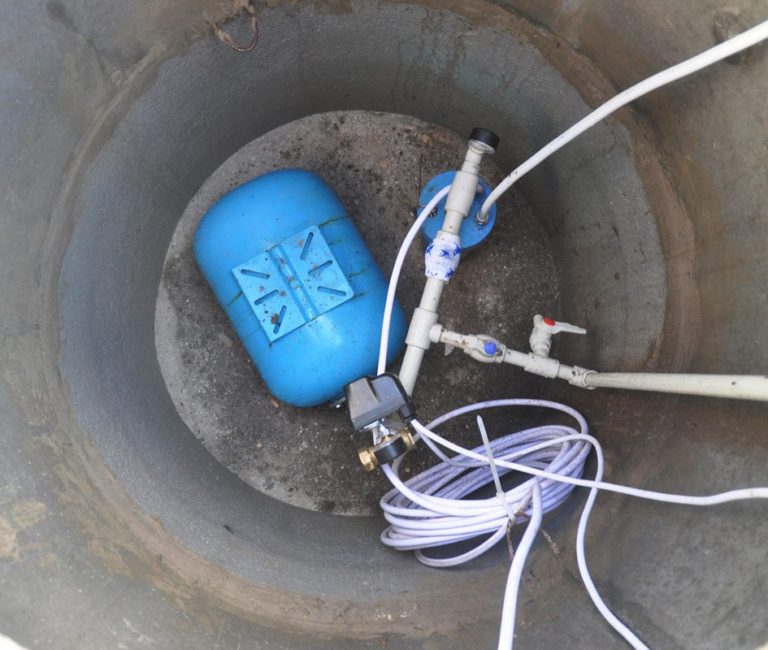Swift Steps to Servicing Your Sump Pump
Book ServiceWe've uncovered this post involving How to Care for Your Sump Pump directly below on the web and accepted it made perfect sense to discuss it with you here.

Sump pumps are vital parts in numerous homes, specifically in areas vulnerable to flooding or excessive moisture. They aid avoid water damage by efficiently removing excess water from basements or crawl spaces. However, like any other appliance, sump pumps need routine upkeep to ensure they operate properly when needed one of the most. Cleaning your sump pump is an important part of its upkeep, and recognizing exactly how to do it appropriately can conserve you from pricey repairs and possible disasters.
Introduction
Maintaining a clean sump pump is essential for its appropriate performance and long life. Disregarding this crucial job can lead to obstructions, malfunctions, and ultimately, water damage to your home. For that reason, finding out exactly how to clean up a sump pump is important for property owners that rely upon these gadgets to keep their cellars completely dry and safeguarded.
Understanding the Sump Pump
Before diving into the cleaning procedure, it's vital to have a basic understanding of just how a sump pump functions. Usually mounted in a pit or container below the basement floor, a sump pump contains a number of vital elements, consisting of a pump, a float switch, and a discharge pipeline. When water collects in the pit, the float switch activates the pump, which after that pumps the water out with the discharge pipe, away from the structure's foundation.
Signs of a Dirty Sump Pump
Knowing when your sump pump needs cleansing is critical for preventing potential breakdowns. Some common indicators that indicate a filthy sump pump consist of strange sounds during operation, lowered water circulation, and noticeable particles in the pit. If you notice any one of these symptoms, it's important to clean your sump pump promptly to prevent any kind of additional issues.
Planning for Cleansing
Before you begin cleansing your sump pump, it's necessary to take some safety and security preventative measures. Beginning by shutting off the power to the pump to stay clear of any electric accidents. Furthermore, use ideal safety equipment, such as gloves and safety glasses, to safeguard on your own from dirt, debris, and possible microorganisms.
Step-by-step Overview to Cleaning Up a Sump Pump
Turning off the Power
Begin by separating the power supply to the sump pump to stop any mishaps while cleansing.
Getting Rid Of Debris and Dirt
Utilize a pail or a scoop to remove any type of visible particles, dust, or sediment from the sump pit. Dispose of the particles correctly to prevent it from obstructing the pump or the discharge pipeline.
Cleaning up the Pump and Float Switch Over
When the pit is clear of particles, very carefully get rid of the pump from the pit. Inspect the pump and the float button for any type of indications of damage or wear. Use a soft brush or towel to clean the surfaces and remove any gathered crud.
Purging the System
After cleansing the pump and float button, purge the sump pit with tidy water to get rid of any type of continuing to be dirt or sediment. This will aid make certain that the pump runs efficiently and efficiently.
Looking For Appropriate Functioning
Prior to reinstalling the pump, execute a fast examination to guarantee that the float button turns on the pump correctly. Pour some water into the sump pit and observe the pump's operation. If everything is working correctly, you can reassemble the pump and reconnect the power supply.
Upkeep Tips to Maintain Your Sump Pump Clean
Along with regular cleansing, there are numerous upkeep pointers you can comply with to maintain your sump pump in optimum problem:
Verdict
Cleansing your sump pump is a crucial element of its maintenance and guarantees that it runs successfully when you require it the most. By following the actions outlined in this guide and including normal maintenance into your regimen, you can expand the life expectancy of your sump pump and shield your home from water damages.
6 STEPS ON HOW TO CLEAN A SUMP PUMP PROPERLY
UNDERSTANDING SUMP PUMPS
Your sump pump plays a crucial role in protecting your home by managing and removing excess water. It primarily functions as a “shield”, guarding your basement against the damaging effects of water accumulation. The pump is housed in a sump pit in the lowest part of your basement, and its job is to pump out any water that collects there.
During heavy rainfalls or when snow melts rapidly, water can infiltrate your basement, posing potential risks like flooding, structural damage, and harmful mold growth. Here, the sump pump springs into action, pumping out the intruding water and directing it away from your home.
SAFETY FIRST
Before cleaning, remember to prioritize safety. Disconnect the sump pump from the power source to prevent any accidental electric shocks. Also, wear sturdy gloves to protect your hands from any sharp or dirty components within the pump.
REMOVE THE SUMP PUMP
After ensuring your safety, the next step is to remove the sump pump from its pit. Doing this might require careful maneuvering as you don’t want to damage any pump components. Once removed, clean the sump pit to remove any accumulated debris or sludge.
INSPECT THE PUMP
Inspect the pump for any visible signs of wear or damage. Check the power cord, float switch, and impeller housing. If any components look worn out or damaged, consider replacing them to ensure optimal performance.
CLEAN THE PUMP
Thoroughly clean the pump with warm, soapy water. Make sure to rid it of any dirt, gravel, or other debris that might impede its performance. You can use a toothbrush to clean the small, hard-to-reach parts of the pump.
REINSTALL THE SUMP PUMP
Reinstall the pump into the sump pit Make sure it’s positioned correctly to remove the water effectively Once it’s back in place, reconnect it to the power source TEST THE PUMP
Finally, pour some water into the pit to ensure the pump works correctly. It should start automatically and begin pumping out the water; if it doesn’t, check the power source and the positioning of the pump.
Remember, while cleaning your sump pump is an essential part of home maintenance, hiring a professional plumber for a thorough inspection and cleaning at least once a year is also important. This will ensure that your pump is in optimal condition, ready to protect your home from potential water damage.
BEST PRACTICES FOR CLEANING SUMP PUMP DISCHARGE PIPES
Regular Inspection: Regularly inspect your discharge pipes, especially during heavy rainfall or snowmelt periods. Look for any signs of blockage or damage. Early detection of problems can prevent serious issues down the line. Periodic Cleaning: Over time, sediment and debris can accumulate in the discharge pipes, impeding the flow of water. Regular cleaning helps keep the pipes clear and functioning efficiently. You can use a high-pressure water jet to effectively clean the pipes. Insulation During Winter: In colder climates, discharge pipes can freeze, blocking the outflow of water. Protect your discharge pipes from freezing temperatures by insulating them with foam pipe insulation. This will ensure the sump pump can continue to discharge water even in freezing conditions. Proper Positioning: The discharge pipe should be positioned to direct water away from your home’s foundation. Improper positioning can lead to water seeping back into the basement. Ensure the pipe is long enough and angled correctly. Installation of a Check Valve: A check valve prevents water from flowing back into your sump pit after the pump has pushed it out. Installing a check valve helps maintain the efficiency of your sump pump and reduces the risk of flooding. Minimize Pipe Turns: Every curve or turn in the discharge pipe can decrease the efficiency of water flow. By minimizing turns and bends in your discharge pipe, you can increase the efficiency of your sump pump. https://www.fullspeedplumbing.com/how-to-clean-a-sump-pump-properly9999/

I am just very fascinated by Steps to Cleaning Your Sump Pump Properly and I am assuming you enjoyed reading our entry. Sharing is good. One never knows, you might be doing someone a favor. I recognize the value of your readership.
Visit